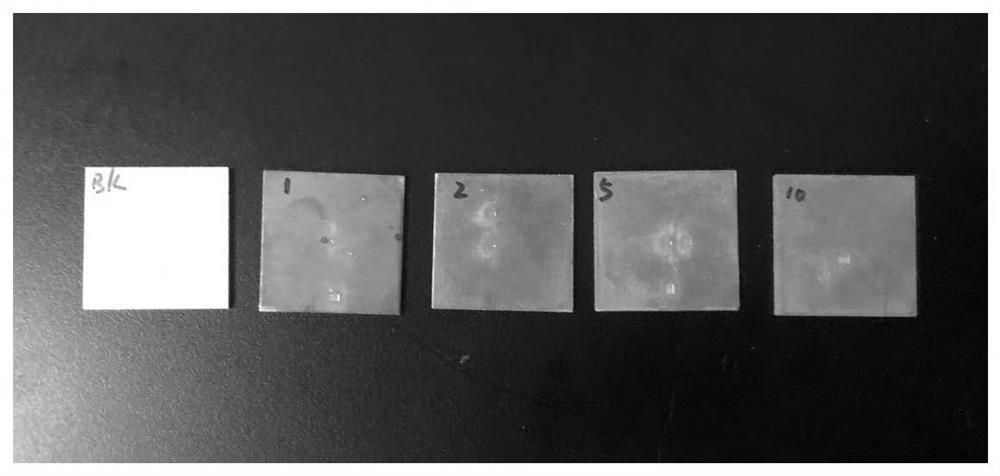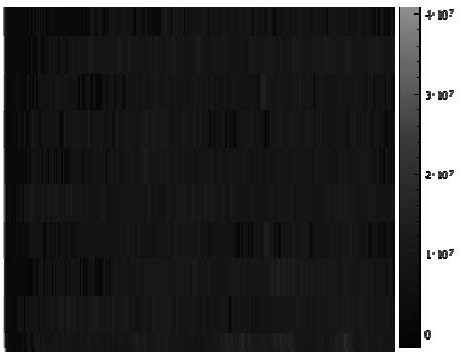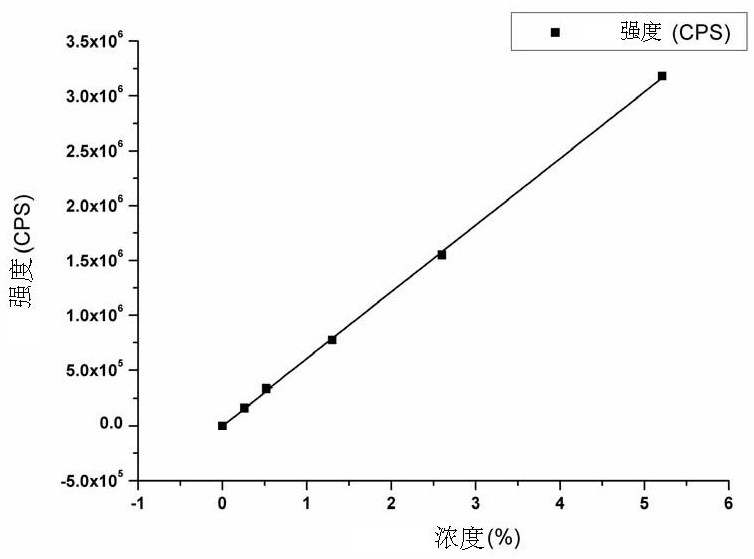Solid Reference Substances and Quantitative Analysis Methods for Laser Ablation Inductively Coupled Plasma Mass Spectrometry
A technology for quantitative analysis and reference substances, applied in the field of analytical chemistry, to solve problems such as lack of reference substances
- Summary
- Abstract
- Description
- Claims
- Application Information
AI Technical Summary
Problems solved by technology
Method used
Image
Examples
Embodiment 1
[0058] The preparation of embodiment 1 solid reference substance
[0059] The present invention uses an aluminum alloy plate with a thickness of 0.12 cm that does not contain nickel, and uniformly cuts the aluminum alloy plate into six base material samples with a size specification of 2.5 cm×2.5 cm. Substrate samples were ultrasonically cleaned for 4 minutes and then dried. A Ni element target with a purity of 99.99% is selected. Put the dried substrate into a vacuum ion coating instrument, set the coating speed to 48nm / min, and control the time to 0min, 1min, 2min, 5min, 10min and 20min respectively, to obtain aluminum-based solid reference materials containing different concentration gradients of Ni. substances such as figure 1 shown.
Embodiment 2
[0060] Embodiment 2 performance investigation
[0061] Select any piece of solid reference material obtained in Example 1, adopt the method of surface scanning (multi-line composition surface), denudate the random area on the surface of the reference material, and collect data to obtain the element distribution map of Ni element on the surface of Al base ( like figure 2 Shown), and calculate the mass spectrum response signal RSD of Ni element with time. Experiments show that the Ni element distribution on the surface of the sample using vacuum ion plating is very uniform, and under continuous laser ablation, a stable signal can be generated, with RSD<10%.
[0062] The samples with different concentration gradients were denuded by line scanning and the mass spectrum response signals were collected. The concentration of the Ni element in the denuded area was selected as the abscissa and the mass spectrum response signal as the ordinate, and a linear regression diagram was draw...
Embodiment 3
[0063] Embodiment 3 actual sample analysis and result verification
[0064] Select an aluminum alloy sample containing Ni element, use the same laser ablation parameters to analyze the unknown sample, and combine the above standard curve equation to obtain the content of Ni element in the sample.
[0065] In addition, grind the sample into powder, weigh 0.1g and place it in a polytetrafluoroethylene container, add 3mL HNO 3 and 9mL HCl, heated at 100°C for 2h until the sample was completely digested, and the volume was set to 100mL, and measured by inductively coupled plasma spectroscopy. The obtained results were compared with those obtained by laser ablation-inductively coupled plasma mass spectrometry, and the results are shown in Table 1.
[0066] Table 1 Laser ablation inductively coupled plasma mass spectrometry analysis and inductively coupled plasma spectroscopy measurement results table
[0067]
[0068] The results showed that the element contents obtained by LA...
PUM
| Property | Measurement | Unit |
|---|---|---|
| thickness | aaaaa | aaaaa |
| wavelength | aaaaa | aaaaa |
Abstract
Description
Claims
Application Information
 Login to View More
Login to View More - R&D
- Intellectual Property
- Life Sciences
- Materials
- Tech Scout
- Unparalleled Data Quality
- Higher Quality Content
- 60% Fewer Hallucinations
Browse by: Latest US Patents, China's latest patents, Technical Efficacy Thesaurus, Application Domain, Technology Topic, Popular Technical Reports.
© 2025 PatSnap. All rights reserved.Legal|Privacy policy|Modern Slavery Act Transparency Statement|Sitemap|About US| Contact US: help@patsnap.com



